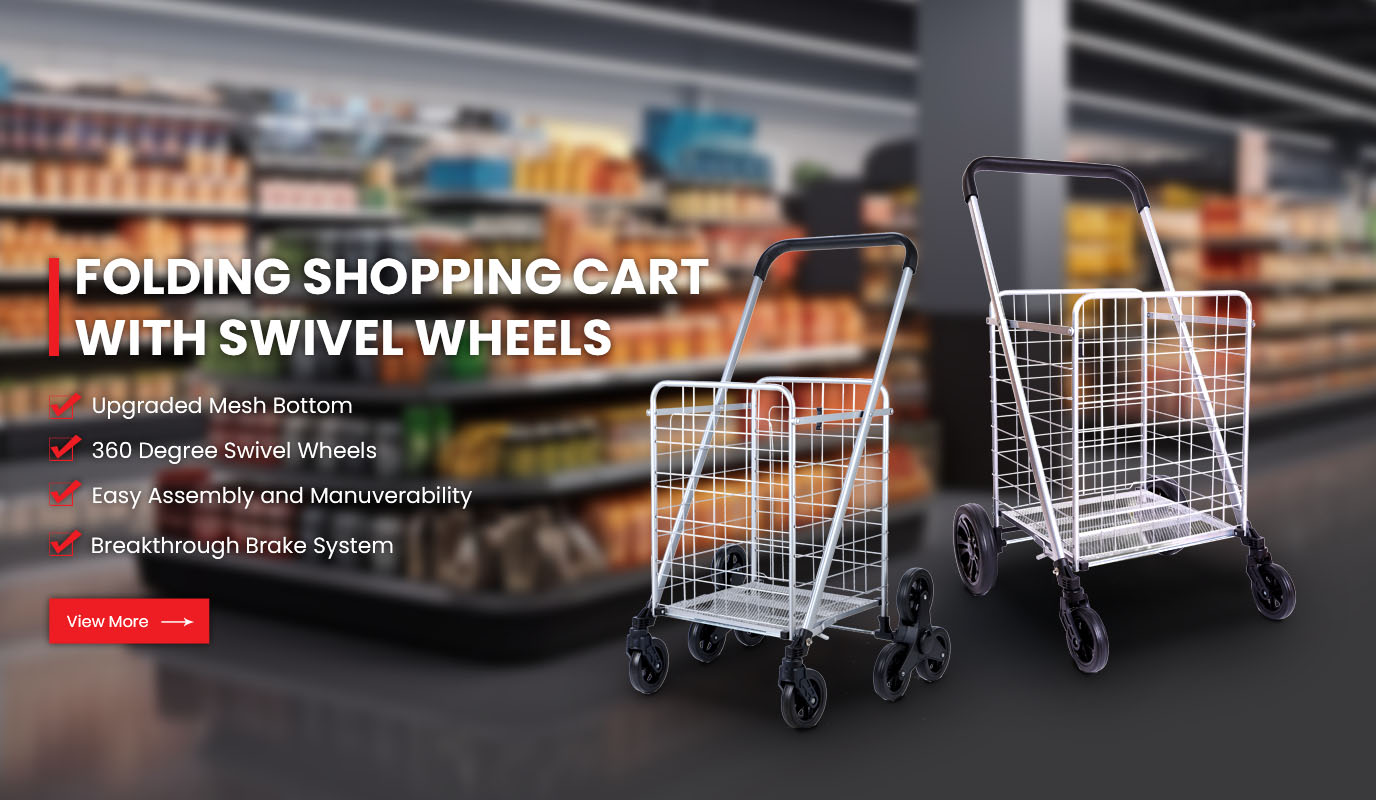How Do Locking Shopping Cart Wheels Work
Locking Shopping Cart wheels are a smart security and safety feature designed to prevent carts from being taken out of designated areas or to keep them stationary on ramps and inclines. These systems are now widely used in supermarkets, hospitals, airports, and industrial logistics — often integrated into professional trolleys like those from Wochang Trolley, which specialize in mobility and braking systems for commercial carts.
1. What Is a Locking Shopping Cart Wheel?
A locking shopping cart wheel is a caster equipped with a built-in braking or electronic locking mechanism that stops the wheel from turning under specific conditions.
Two main types exist:
| Type | Function | Common Use |
|---|---|---|
| Mechanical Locking Wheel | Uses a pedal or lever to manually stop the wheel’s rotation | Common in utility or hotel trolleys |
| Electronic Locking Wheel | Uses sensors and radio signals to automatically lock when leaving a boundary | Common in supermarket shopping carts |
Wochang’s heavy-duty trolley casters, for example, use precision ball bearings and foot-operated locks for smooth mobility and stable parking in laundry or logistics applications.
2. How Mechanical Locking Wheels Work
These locks are manually engaged using a foot pedal or switch.
How It Works:
Each wheel is mounted on a swivel caster with a brake lever.
When the lever is pressed down, a metal or rubber pad pushes against the wheel, stopping it from turning.
To release, lift the lever — the pad moves away, allowing the wheel to roll freely again.
Advantages:
Simple and durable.
Easy to operate.
Works on most surfaces.
Used In:
Laundry trolleys
Service carts
Industrial racks
Medical equipment
This is the same principle used in Wochang’s locking casters, providing stability when the cart needs to stay stationary during loading or unloading.
3. How Electronic Locking Shopping Cart Wheels Work
Supermarkets and retail stores use smart electronic systems to stop carts from leaving parking lots or store perimeters.
Key Components:
| Component | Function |
|---|---|
| Locking Wheel | Contains an internal brake mechanism controlled by an electric signal. |
| Perimeter Wire or Boundary Line | A buried cable emits a low-frequency radio signal around the store area. |
| Receiver / Sensor | Installed inside the wheel housing to detect the signal. |
| Control Chip | Activates or releases the lock depending on signal presence. |
How It Works: Step by Step
Inside the Store:
The boundary wire emits a constant radio signal (usually around 7.8–9.5 kHz).
The wheel’s sensor detects this signal and keeps the lock disengaged.
The cart moves normally.
At the Parking Lot Boundary:
As the cart approaches the buried wire, the signal drops below a set threshold.
The wheel’s microcontroller activates an internal locking pin, which jams the wheel.
The cart stops rolling instantly — one wheel locks while the others continue spinning.
When Returned to the Store:
The wheel re-enters the signal zone.
The control system automatically releases the locking pin.
The cart moves freely again.
4. Locking Mechanism Details
The lock usually acts on one rear wheel of the cart.
Inside the wheel, a spring-loaded pin or clutch engages the hub when activated.
The pin prevents the wheel from rotating, but does not damage the surface.
Some advanced systems use battery-powered microchips or inductive energy harvesting from the signal field, eliminating the need for manual charging.
These systems combine mechanical precision with low-frequency electronics — a design approach that inspires Wochang’s innovations in controlled caster mobility for industrial carts.
5. Benefits of Locking Wheel Systems
| Benefit | Description |
|---|---|
| Prevents Cart Theft | Carts automatically lock when leaving store boundaries. |
| Improves Safety | Stops runaway carts on slopes or windy areas. |
| Reduces Maintenance Costs | Keeps carts on-site, reducing replacement frequency. |
| Enhances User Control | Workers or shoppers can safely stop carts during use. |
| Supports Fleet Management | Systems can track cart locations and signal strength. |
For large facilities like hotels or hospitals, similar systems help secure trolleys and prevent accidental rolling during transport or cleaning operations.
6. Maintenance and Troubleshooting
For manual locks: Keep pedals and brake pads clean; lubricate moving parts monthly.
For electronic systems: Check for sensor damage, battery level, or interference from nearby metal structures.
Replace worn tires to maintain traction and prevent uneven locking.
Wochang’s commercial-grade trolleys feature easy-to-service caster designs, allowing quick replacement of locking mechanisms without full disassembly.
✅ Summary
| Lock Type | Mechanism | Application |
|---|---|---|
| Manual Locking Wheel | Pedal-activated brake presses against wheel | Hotel, laundry, service carts |
| Electronic Locking Wheel | Sensor detects signal and engages brake automatically | Supermarket, retail, airport carts |
Locking shopping cart wheels work by combining mechanical friction or electronic signal control to stop unwanted movement. They protect property, improve safety, and maintain operational efficiency.
Smart control. Stable mobility. Reliable engineering — the foundation of every Wochang trolley wheel system.
Previous: What Is A Shopping Cart Made Of




